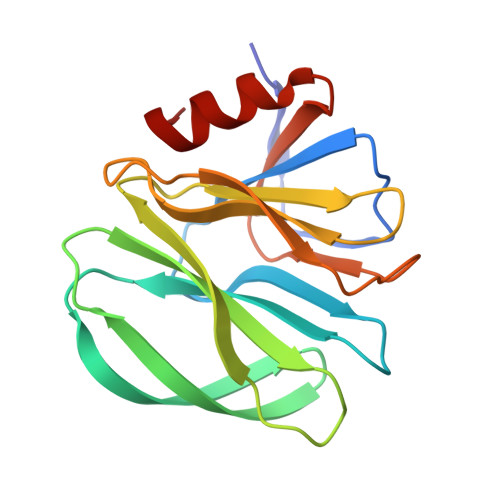Structural basis of glycan specificity in neonate-specific bovine-human reassortant rotavirus.
Hu, L., Ramani, S., Czako, R., Sankaran, B., Yu, Y., Smith, D.F., Cummings, R.D., Estes, M.K., Venkataram Prasad, B.V.(2015) Nat Commun 6: 8346-8346
- PubMed: 26420502
- DOI: https://doi.org/10.1038/ncomms9346
- Primary Citation of Related Structures:
4YFW, 4YFZ, 4YG0, 4YG3, 4YG6 - PubMed Abstract:
Strain-dependent variation of glycan recognition during initial cell attachment of viruses is a critical determinant of host specificity, tissue-tropism and zoonosis. Rotaviruses (RVs), which cause life-threatening gastroenteritis in infants and children, display significant genotype-dependent variations in glycan recognition resulting from sequence alterations in the VP8* domain of the spike protein VP4. The structural basis of this genotype-dependent glycan specificity, particularly in human RVs, remains poorly understood. Here, from crystallographic studies, we show how genotypic variations configure a novel binding site in the VP8* of a neonate-specific bovine-human reassortant to uniquely recognize either type I or type II precursor glycans, and to restrict type II glycan binding in the bovine counterpart. Such a distinct glycan-binding site that allows differential recognition of the precursor glycans, which are developmentally regulated in the neonate gut and abundant in bovine and human milk provides a basis for age-restricted tropism and zoonotic transmission of G10P[11] rotaviruses.
Organizational Affiliation:
Verna and Marrs McLean Department of Biochemistry and Molecular Biology, Baylor College of Medicine, One Baylor Plaza, Houston, Texas 77030, USA.















